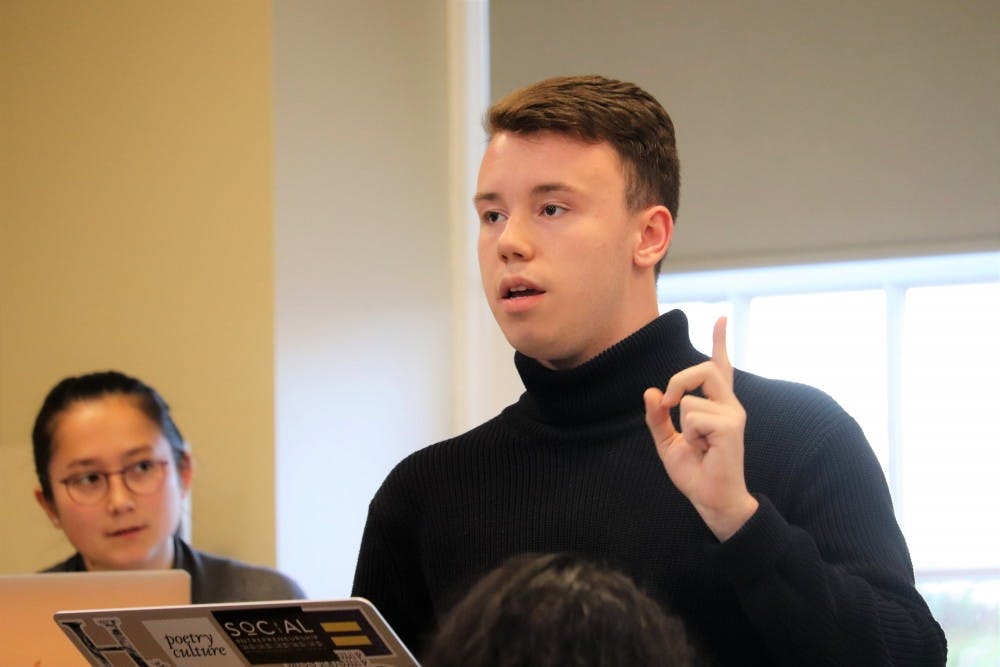Student Council passed a bill during their general body meeting Tuesday evening to create an ad hoc committee on “Renaming, Recontextualizing, and Removal.” According to the bill, the committee will be responsible for “examining the history of various monuments, buildings, and historical areas on grounds, conducting interviews with stakeholders and historical experts, and creating a final report on what actions are recommended regarding each area of interest.”
The bill was sponsored by second-year College representative Hunter Wagenaar, whose platform when running for Student Council representative this spring included removal of the Whispering Wall and who wrote a recent opinion piece published in The Cavalier Daily titled “Remove the Whispering Wall.”
The Whispering Wall is a marble monument on Grounds situated between Newcomb Hall and Monroe Hall, with controversy around the monument’s purpose recently emerging among University students. The monument was erected in 1938 to honor Confederate soldier Frank Hume, who fought in the Civil War, was wounded at the Battle of Gettysburg and went on to serve in the Virginia House of Delegates.
In a Facebook post on Feb. 21, Wagenaar explained why the removal of the Whispering Wall was so important to his campaign platform, saying that he wished to bring greater awareness to the history behind the monument.
“One of the points on my platform that has received a lot of questions has been the removal of the Whispering Wall,” Wagenaar wrote. “Many do not know the history of this memorial. I hope that if anything this point on my platform will spark a discussion on the continued maintenance of confederate memorials and the names of white supremacists on many buildings around Grounds.”
Wagenaar proposed replacing the Whispering Wall with a “Memorial to the Victims of Eugenics” to “allow for a more inclusive environment while attempting [to] heal the past.” Wagenaar added in his opinion piece that the Whispering Wall is not a memorial that can be recontextualized as recontextualization means that the memorial “must be placed in an environment that supposes context, such as a museum or exhibit.”
During the general body meeting Tuesday, Wagenaar said that the bill would be effective in helping to investigate and educate the history of the meanings behind such monuments.
“I think this committee is important in investigating areas of history at our University that are problematic or affecting minority students or students of color,” Wagenaar said.
Another place that could potentially fall under the review of the committee includes Alderman Library, named after former University president Edwin Alderman. In the past, it has been suggested that Alderman’s complicated legacy and ties to eugenics could be grounds for removal of his name from the building.
However, Wagenaar said during the meeting that he does not want the committee to preemptively focus on any specific monument or building to allow for student and faculty perspectives to be heard after the body is formally established.
Wagenaar will serve as the executive chair of the committee. The committee will also include two Student Council representatives, two members of the Buildings and Grounds Committee, five University students and three University faculty members. Committee members will be selected through an application process, which is expected to be released soon. According to the bill, the committee’s final report is set to be released by the end of the fall 2019 semester.







